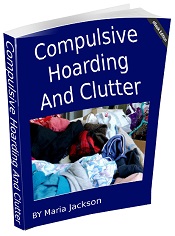Three Symptoms of Compulsive Hoarding Behavior
If a person enjoys collecting things, does that automatically make them a hoarder? NO. There are three common symptoms of compulsive hoarding behavior to watch out for.
Symptom #1:
The person will have an irrepressible obsession with acquiring material items. These items do not even need to be acquired through shopping, it is common for hoarders to get them from the trash and from other people.
Symptom # 2:
The compulsive hoarders living space becomes so over-ridden with these items, that it makes it very difficult for the person to move around and function normally in the space. As the rooms become more and more cluttered, they become completely unusable.
Symptom # 3:
The person who is exhibiting the hoarding behavior shows signs of diminished functionality because of this disorganization and may also begin to suffer from depression.
A person can only be diagnosed with compulsive hoarding behavior if all three symptoms are present. The compulsion has to be so overwhelming that it actually causes visible problems in the life of the person affected.
Compulsive hoarders have a tendency to perpetually attain as well as save material possessions indefinitely. Even when items are useless and maybe even hazardous. It is quite common for hoarders to save items for years or even decades.
To better comprehend to emotional state of the hoarder, here is a common hoarding scenario:
A man in his sixties has attempted to get some professional help with his hoarding behavior. His wife has left him and his children have moved out because he refuses to get rid of the junk that has accumulated in the house over many years.
He feels helpless, but is not capable of throwing away the items.
The kitchen has a lot of old food containers, wrappers and trash on the floor. The living room is completely full of boxes of junk and there is only a narrow walking path within that room.
The fire department becomes aware of the situation and deems his house as “not up to code”. They then give him a deadline to clean up his home and advise him that is if it is not completed by that date that the city will be forced to take action. Even after being given a warning about the situation, his compulsion to attain items through uncontrollable shopping and through ‘roadside trash collecting’ has not ceased.
What does it feel like to be him?
When he walks down a street, he actively avoids going by newsstands, because he knows that he will have the compulsion to purchase an excessive number of magazines and newspapers. If he does, the new purchases will then wind up in some random box in the living room – again.
He is uncontrollably drawn to the newsstand, thinking that maybe those newspapers and magazines will contain information that will hold the key to turning his life around for the better.
He also feels this way when he observes people throwing away broken furniture, appliances or gadgets in the trash. He looks through dumpsters and trash cans regularly (at least once a week) to acquire stuff. He feels as though if something can be repaired or ‘isn’t in that bad of shape’, then it is worth saving.
When the professional organizer/therapist arrives, they start off slow. The therapist asks the man to choose just a few items to throw away (items that have no use and are not needed).
When he attempts to throw away a small piece of paper with some random notes scribbled on it, he feels like he can do it at first, but then he starts to get frantic as the scrap of paper falls into the trash can.
The reason? He feels like he is throwing away a piece of himself.


